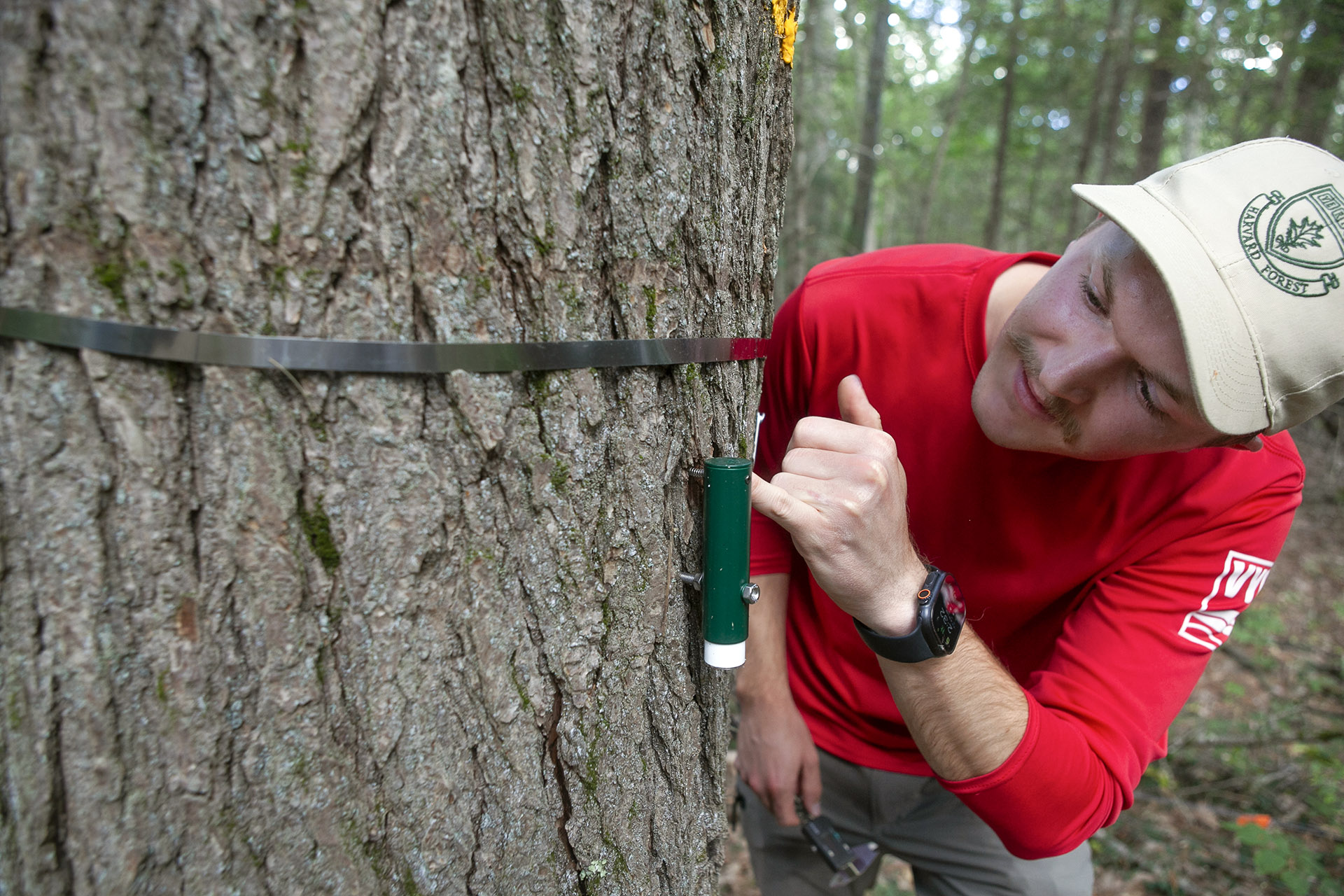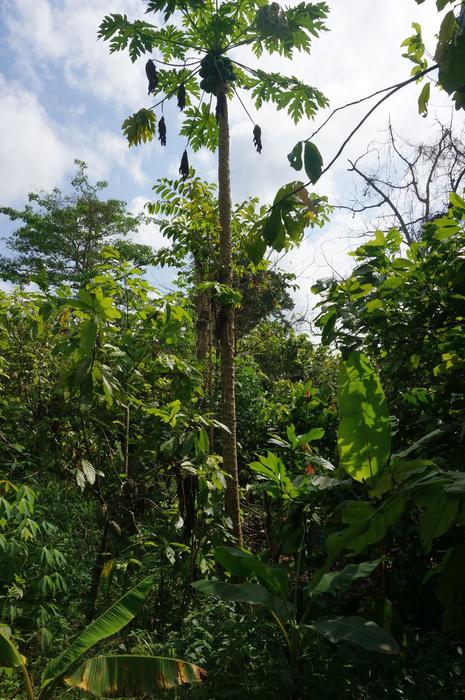Tracking climate change through nature’s ‘breaths’ – Harvard Gazette

Report on the Harvard Forest Environmental Measurement Station and its Contribution to Sustainable Development Goals
Executive Summary
This report details the history, methodology, and impact of the Harvard Forest Environmental Measurement Station (EMS), a long-term research project initiated to quantify the role of terrestrial ecosystems in the global carbon cycle. The project’s findings and the subsequent global network of monitoring stations provide critical data that directly supports the achievement of several United Nations Sustainable Development Goals (SDGs), most notably SDG 13 (Climate Action) and SDG 15 (Life on Land). The continuous data collection, now entering its fourth decade with the installation of EMS 2.0, is essential for informing global climate policy, promoting sustainable land management, and understanding the impacts of climate change on biodiversity.
I. The Scientific Impetus: Addressing Gaps in Global Carbon Accounting
A. The “Missing Carbon Sink” Problem
In the 1980s, a significant discrepancy existed in the global carbon budget. Scientific analysis revealed that approximately half of the carbon dioxide (CO₂) emitted from fossil fuels was not accounted for in atmospheric measurements. This initiated a search for the “missing carbon sink.” While forests were known to absorb CO₂ through photosynthesis and release it through respiration, the net balance was poorly understood. Quantifying this balance was identified as a critical step for predicting future climate change, a core objective of SDG 13: Climate Action.
B. An Innovative Approach to Measurement
Atmospheric chemist Steven Wofsy developed a method to measure the net exchange of carbon between a forest and the atmosphere. This involved continuously monitoring CO₂ concentrations and wind dynamics above the forest canopy. This technological approach represents a key advancement in environmental science, aligning with SDG 9: Industry, Innovation, and Infrastructure by creating a new scientific infrastructure for climate monitoring.
II. The Harvard Forest EMS Tower: Methodology and Key Findings
A. Operational Framework
The Environmental Measurement Station (EMS) was established at Harvard Forest in 1989. Its primary function is to calculate the net carbon exchange, or “eddy flux,” through high-frequency measurements.
- Data Collection: Since October 1989, instruments on a 100-foot tower have continuously analyzed the air.
- Instrumentation: An infrared spectrometer measures CO₂ and water vapor concentrations, while a 3D sonic anemometer records vertical and horizontal wind speeds.
- Output: The covariance between gas concentration and vertical wind speed over time reveals whether the forest is a net source or sink of carbon.
B. Initial Findings and Impact on SDG 13
The initial data provided a groundbreaking insight into the carbon cycle.
- Confirmation of a Carbon Sink: The research proved that the regenerating Harvard Forest was a significant net carbon sink, absorbing approximately two tons of carbon per hectare annually. This discovery helped locate the “missing carbon.”
- Informing Climate Models: By providing a method for rigorous carbon accounting, the EMS data allows for more accurate climate models and validates the crucial role of forests in climate mitigation strategies, directly supporting targets within SDG 13.
- Guiding Land-Use Policy: The data underwrites critical land-use decisions, such as the choice between forest preservation and clearing land for other uses like solar farms, ensuring that decisions genuinely contribute to reducing atmospheric CO₂.
III. Global Expansion and Support for SDG 17: Partnerships for the Goals
A. A Global Network of Flux Towers
The success of the Harvard Forest EMS inspired the creation of a global network of similar monitoring towers, which now number in the hundreds across continents. This network, known as FLUXNET, exemplifies SDG 17: Partnerships for the Goals. It fosters international scientific collaboration to generate standardized, comparable data on ecosystem-atmosphere interactions worldwide.
B. Monitoring Critical Ecosystems
This global partnership provides vital data on some of the planet’s most significant carbon stores, contributing to the protection of global ecosystems as outlined in SDG 15: Life on Land.
- Amazon Rainforest: Towers monitor the delicate balance between rapid photosynthesis and intense respiration.
- Boreal Forests: Research tracks vast carbon stores in northern peatlands and the risk of their release due to fire, drought, or permafrost thaw.
IV. Long-Term Data and Challenges to SDG 15: Life on Land
A. Observing Climate Change Impacts
The world’s longest-running flux data set from the EMS tower reveals clear evidence of climate change impacting the forest ecosystem, a direct threat to the targets of SDG 15.
- Altered Winter Conditions: Reduced snowpack leads to less spring meltwater for growth and exposes tree roots to damaging deep freezes.
- Increased Variability: After a decade of steady carbon uptake, the system now shows significant oscillations, including a year where net carbon absorption fell to zero, highlighting the forest’s vulnerability to climate disturbances.
B. Threats to Biodiversity
The research also documents changes in the forest’s composition, a critical concern for biodiversity conservation under SDG 15.
- Invasive Species and Blight: Native species such as hemlock, ash, and beech are in decline due to pests and diseases spread by human activity.
- Ecosystem Transformation: The forest is undergoing a transformation shaped by climate change and exotic species, with long-term implications for its function as a carbon sink.
V. Conclusion: The Future of Monitoring with EMS 2.0
The installation of the new EMS 2.0 tower ensures the continuation of this vital data collection. As the global community strives to meet the Sustainable Development Goals, the long-term research at Harvard Forest remains indispensable. It provides the empirical evidence needed to track the health of terrestrial ecosystems (SDG 15), foster global scientific partnerships (SDG 17), and develop effective, data-driven policies to take urgent action on climate change (SDG 13).
Analysis of the Article in Relation to Sustainable Development Goals (SDGs)
1. Which SDGs are addressed or connected to the issues highlighted in the article?
- SDG 13: Climate Action – The article’s central theme is understanding the global carbon cycle to predict and mitigate climate change. It focuses on measuring carbon dioxide (CO₂) exchange between forests and the atmosphere.
- SDG 15: Life on Land – The research is conducted in a forest ecosystem (Harvard Forest) and examines its health, its role as a carbon sink, and the threats it faces from climate change and invasive species, which impacts biodiversity.
- SDG 9: Industry, Innovation, and Infrastructure – The article highlights a significant scientific and technological innovation: the development of the eddy flux measurement technique and the Environmental Measurement Station (EMS) tower, which represents a crucial piece of scientific infrastructure for environmental monitoring.
- SDG 17: Partnerships for the Goals – The success and impact of the initial research project led to the creation of a global “network of towers, now hundreds strong, around the world, from Korea to Congo,” signifying international scientific collaboration to address a shared global challenge.
2. What specific targets under those SDGs can be identified based on the article’s content?
- Under SDG 13: Climate Action
- Target 13.2: Integrate climate change measures into national policies, strategies and planning. The article states that the data from the network of towers “inform policy and land-use decisions” and help in making “hard choices — keep a forest standing or clear it for a solar farm.” This directly links the scientific research to policy-making for climate mitigation.
- Target 13.3: Improve education, awareness-raising and human and institutional capacity on climate change mitigation. The entire project, from its inception to the creation of the world’s longest-running flux data set, fundamentally builds the scientific capacity and knowledge base required to understand and address climate change.
- Under SDG 15: Life on Land
- Target 15.2: Promote the implementation of sustainable management of all types of forests. The research provides the “rigorous carbon accounting” necessary for the sustainable management of forests, quantifying their value as carbon sinks.
- Target 15.5: Take urgent and significant action to reduce the degradation of natural habitats, halt the loss of biodiversity. The article explicitly notes that the forest is changing, with “native hemlock, ash, and beech… fading under blights” and being “transformed by climate change and exotic species,” highlighting the issue of biodiversity loss.
- Under SDG 9: Industry, Innovation, and Infrastructure
- Target 9.5: Enhance scientific research, upgrade the technological capabilities of industrial sectors in all countries… and encourage innovation. The development of the EMS tower and the eddy flux measurement technique is a clear example of enhancing scientific research and creating new technology to solve a critical environmental problem (“they had found the missing carbon — and, more important, the way to measure it”).
- Under SDG 17: Partnerships for the Goals
- Target 17.6: Enhance… international cooperation on and access to science, technology and innovation. The article describes how the initial project “inspired a network of towers, now hundreds strong, around the world,” which is a direct example of international scientific cooperation to monitor the global carbon cycle.
3. Are there any indicators mentioned or implied in the article that can be used to measure progress towards the identified targets?
- Net Carbon Exchange (Eddy Flux): This is the primary indicator measured by the tower. The article quantifies this for the Harvard Forest as “absorbing roughly 2 tons of carbon per hectare per year.” This directly measures the forest’s capacity as a carbon sink, relevant to SDG 13 and SDG 15.
- Long-term Carbon Sequestration Trends: The article mentions observing oscillations where “carbon uptake double for a few years before falling, for one year, to zero.” Tracking these decadal trends is a key indicator of the ecosystem’s response to climate variability and its long-term health.
- Percentage of Global Emissions Absorbed by Terrestrial Ecosystems: The article states that “the terrestrial biosphere — plants, animals, and soil microbes — takes in 25 to 30 percent of our emitted CO₂.” Monitoring this percentage is a global-scale indicator of the planet’s ability to absorb emissions.
- Changes in Forest Species Composition: The article implies an indicator for biodiversity loss by noting that “native hemlock, ash, and beech are fading.” A systematic measurement of the decline of native species and the rise of invasive ones would serve as a direct indicator for Target 15.5.
- Growth of Global Monitoring Infrastructure: The expansion from one tower to a “network of towers, now hundreds strong, around the world” is a clear indicator of progress in building the scientific infrastructure and international partnerships (SDG 9 and SDG 17) needed for global climate monitoring.
4. Summary Table of SDGs, Targets, and Indicators
| SDGs | Targets | Indicators |
|---|---|---|
| SDG 13: Climate Action | 13.2: Integrate climate change measures into policies. 13.3: Improve education and institutional capacity on climate change mitigation. |
– Net carbon exchange (eddy flux) measured in tons of carbon per hectare per year. – Long-term trends in carbon uptake and release by ecosystems. |
| SDG 15: Life on Land | 15.2: Promote sustainable management of all types of forests. 15.5: Halt the loss of biodiversity. |
– Percentage of global CO₂ emissions absorbed by the terrestrial biosphere (25-30%). – Changes in the composition of forest species (e.g., the decline of native hemlock, ash, and beech). |
| SDG 9: Industry, Innovation, and Infrastructure | 9.5: Enhance scientific research and upgrade technological capabilities. | – Development and deployment of advanced monitoring technologies (e.g., EMS tower with infrared spectrometer and 3D sonic anemometer). – Establishment of long-running data sets (“world’s longest-running flux data set”). |
| SDG 17: Partnerships for the Goals | 17.6: Enhance international cooperation on science, technology and innovation. | – The number of monitoring stations in the global network (“hundreds strong, around the world”). |
Source: news.harvard.edu
What is Your Reaction?
 Like
0
Like
0
 Dislike
0
Dislike
0
 Love
0
Love
0
 Funny
0
Funny
0
 Angry
0
Angry
0
 Sad
0
Sad
0
 Wow
0
Wow
0



















































.jpg.webp?itok=0ZsAnae9#)
























